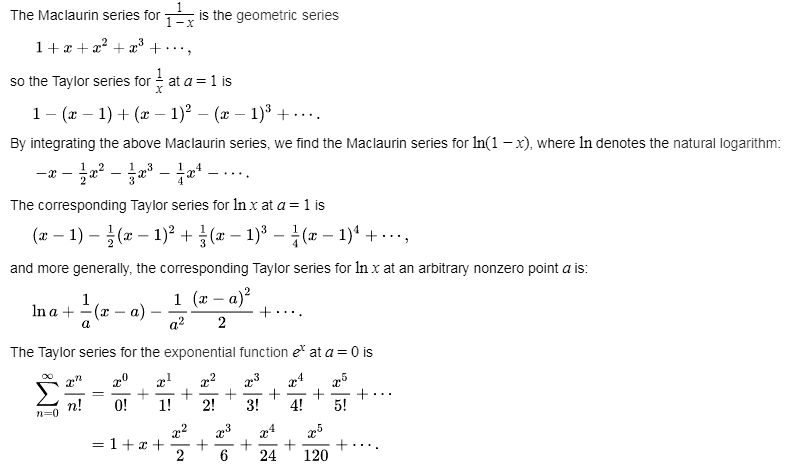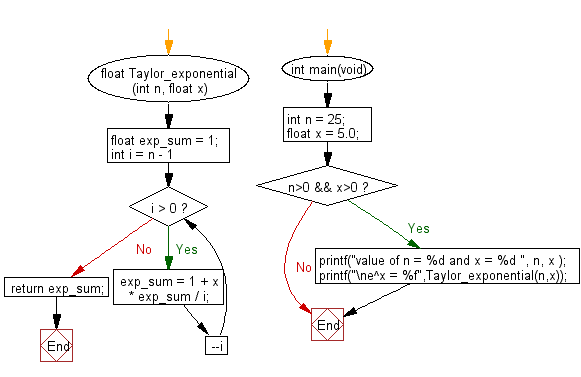C Exercises: Calculate e raise to the power x using sum of first n terms of Taylor Series
24. Exponential Taylor Series Variants
Write a C program to calculate e raised to the power of x using the sum of the first n terms of the Taylor Series.
From Wikipedia,
In mathematics, a Taylor series is a representation of a function as an infinite sum of terms that are calculated from the values of the function's derivatives at a single point.
Example:
The Taylor series for any polynomial is the polynomial itself.

The above expansion holds because the derivative of ex with respect to x is also ex, and e0 equals 1.
This leaves the terms (x − 0)n in the numerator and n! in the denominator for each term in the infinite sum.
Example:
Input: n = 25
float x = 5.0
Output: e^x = 148.413162
Sample Solution:
C Code:
#include <stdio.h>
#include <stdlib.h>
// Function to calculate the exponential function using Taylor series approximation
float Taylor_exponential(int n, float x) {
float exp_sum = 1; // Initialize the sum as 1 (initial term of Taylor series)
// Loop to calculate each term of the Taylor series for the exponential function
for (int i = n - 1; i > 0; --i) {
exp_sum = 1 + x * exp_sum / i; // Calculate the next term of the series and update the sum
}
return exp_sum; // Return the final result of the Taylor series approximation for e^x
}
// Main function
int main(void) {
int n = 25; // Number of terms for Taylor series
float x = 5.0; // Value of x in e^x
// Check if n and x are greater than 0 before proceeding
if (n > 0 && x > 0) {
printf("value of n = %d and x = %f ", n, x);
printf("\ne^x = %f", Taylor_exponential(n, x)); // Calculate and print the result of e^x
}
return 0;
}
Sample Output:
value of n = 25 and x = 1968710504 e^x = 148.413162
Flowchart:

For more Practice: Solve these Related Problems:
- Write a C program to compute e^x using the Taylor series expansion with a specified number of terms.
- Write a C program to approximate e^x and compare the result with the math library function for accuracy.
- Write a C program to calculate e^x using an iterative summation of series terms until convergence.
- Write a C program to implement the Taylor series for e^x using recursion to compute each term.
Go to:
PREV : Next Smallest Palindrome Variants.
NEXT : Prime Factorization Variants.
C Programming Code Editor:
Improve this sample solution and post your code through Disqus.
What is the difficulty level of this exercise?
Test your Programming skills with w3resource's quiz.
